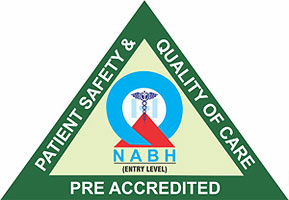+91-7291089674 (Bandra)
+91-7291092120 (Kandivali)




September 8, 2022 | Author: Admin
Lazy eye, or Amblyopia, is a condition that causes poor vision (visual acuity), typically in one eye and usually affects around three out of every 100 people.
The non-scientific term for amblyopia is lazy eye. This condition results from the poor development of eye teaming, or eyes working together. The development gets impacted during the basic time of the initial 7-8 years of life. This important vision skill empowers the two eyes to cooperate and work together, focusing on the same point. At the point when they don’t, it leads to one or both eyes not seeing clearly.
In addition, as the brain does not develop the capacity to see clearly in one or both eyes, the eyes of an individual with amblyopia cannot be improved with glasses alone. The visual cortex is the part of the brain responsible for this function.
Many individuals get confused with "lazy eye" and eye turn (at times called "crossed eyes"). This commonly happens when one eye focuses on a point and the other eye looks in a different direction. An eye turn is actually a different condition called "strabismus." An individual might have amblyopia regardless of eye turn, and all patients with eye turn don’t have a lazy eye.
In many cases of amblyopia, one eye simply is not seeing as clearly as the other is.
The lazy eye develops due to unusual visual experiences in early days of your life (basic time of the initial 7-8 years of life) that changes the nerve pathways between the brain and a thin layer of tissue (retina) at the rear of the eye. The weaker eye gets fewer visual signals. Moreover, in the long run, the eyes’ ability to work together diminishes, and the brain suppresses or overlooks input from the weaker eye.
Anything that blurs a youngster’s vision or makes the eyes cross or turn out can cause a lazy eye. Due to this hazy vision, the brain has suppressed the information in a single eye. This adversely affects the development of clear vision.
Typically, the mind gets two pictures at somewhat different points, and it combines them to create a 3D picture, called binocular vision. However, that is not the situation with amblyopia.
The suppression of information from one eye adversely influences the development of binocular vision. Thus, it seems like one eye does everything for seeing. Subsequently, the other eye is portrayed as “lazy."
Lazy eye can be caused by any eye condition that interferes with the kid’s seeing from one or both eyes.
Generally, the lazy eye is treated by patching. In this, the stronger eye is simply covered so that the weaker eye is compelled to function or see. The affected visual centres of the brain are thus stimulated by this forced seeing.
This form of treatment has the issue that it does not focus on developing binocular vision. With the patch, visual improvement occurred, but was subsequently restricted by age.
For a long time, it has been felt that only youngsters under the age of 9–10 years could be effectively treated for amblyopia (lazy eye). This means that the lazy eye treatment was generally not given to older kids. Thus this misguided judgement was up until this point, that the traditional treatment of patching was not powerful beyond this age.
For a long time it was accepted that amblyopia was just treatable in kids, that too for the children who are 10 years of age or younger. Nonetheless, this isn’t really the situation. Many adults can see results from amblyopia treatment, as every patient is different.
Because of the brain’s plasticity, the visual framework, which comprises the mind, eyes, and visual pathways, can be retrained.
For amblyopia, binocular vision is the root cause, and that needs to be specifically retrained.
The two pictures that the eyes see can’t be consolidated into one single picture when the patient is having poor binocular vision. However, because of the plasticity of the brain, this doesn’t need to be permanent.
While treatment is best when it’s given at an early age, it is yet possible at any age to retrain the visual framework, re-establish binocular vision, and correct amblyopia.
Amblyopia (lazy eye) in adults might require one or all of these treatment approaches depending upon the individual diagnosis:
The best treatment for the condition is an individualised programme of optometric vision therapy overseen by a developmental optometrist.
The best treatment for the condition is an individualised programme of optometric vision treatment directed by a developmental optometrist.
Depending on the degree of seriousness of the amblyopia, it can require considerable time to treat. Keep in mind, the process is reversing a lifetime of suppression.
While it’s feasible to work on in adults, amblyopia treatment requires motivation and commitment as it commonly takes more time to treat than in youngsters.
The good news for adults with amblyopia is that there is certainly a possibility for further development of vision. In addition, as every case is different so every patient must be thoroughly evaluated through a functional vision test.
It is strongly advised that you consult with a developmental optometrist to determine what treatments are available to you.